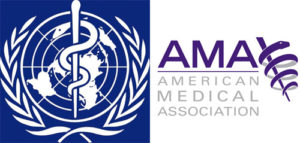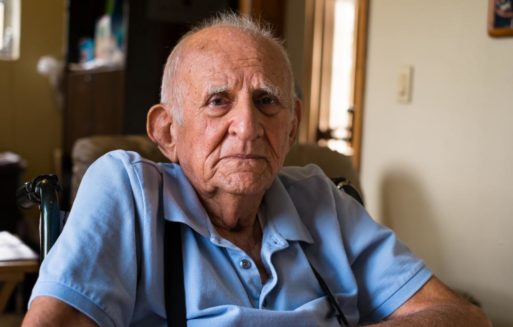
Credit: mentalfloss.com
In a move that was unsurprising to those who have been following the “opioid epidemic” in the United States, the American Medical Association declared in June that it was rescinding its recommendation that pain be assessed as the “fifth vital sign.” Coming on the heels of the latest pain management guidelines released by the U.S. Centers for Disease Control and Prevention in March of this year, the announcement sounded the death knell for compassionate pain care in the United States, and left millions of Americans wondering, “What’s next?”
Historically in medicine, “vital signs ” included heart rate, breathing rate, blood pressure, and temperature — the most basic indicators of a person’s state of health. But in 2001, the Joint Commission on Hospital Accreditation — responding to the enormous public health problem of chronic, undertreated pain — added standards that required health care providers to include pain in that assessment, usually by asking patients to rate their pain on a scale of zero to 10. The Commission did not provide guidance about pain treatment; that decision was left to the providers themselves.
The AMA also passed a proposal that calls for the elimination of the requirement that hospitals ask patients about the quality of their pain care. Medicare uses this information as part of its overall quality assessment, financially rewarding hospitals who achieve the highest patient-satisfaction scores. Said AMA Chairperson Patrice Harris, M.D., “Judging health care facilities on an overly subjective measure – that is, how well it is perceived that they treat pain — is an overly simplistic approach to measuring clinical effectiveness.“
Dr. Harris did not address the fact that all patient symptoms are subjective by definition, or the fact that controlling symptoms is, in large part, what hospitals and health care providers are paid to do.
Speaking on behalf those who opposed the abolition of pain as a “vital sign,” Lynn Webster, M.D., former president of the American Academy of Pain Medicine, said, “It appears that advocates…are suggesting that if we just ignore pain then we won’t have to deal with pain and opioid abuse will disappear. That is not only fantastical thinking, it is harmful to millions of people in pain.”
“I am astounded that physicians don’t believe we should assess pain on a regular and ongoing basis,” he added. “That is exactly what removing pain as a vital sign means.”

Chronic pain disproportionately affects seniors and people at the end of life
(Credit: wisegeek)
In fact, chronic unremitting pain has for many years been a major public health issue in the United States, and one that disproportionately affects seniors and those at the end of life. According to American Academy of Pain Medicine estimates, about 100,000 million Americans suffer from pain on regular basis, outnumbering those with cancer, diabetes, and heart disease combined. As of 2010, the cost of chronic pain to the American economy — in terms of medical care and lost productivity — was an estimated $560 to $635 billion per year.
Even more disturbing than the sheer number of patients in pain is the number of people who continue to suffer at the end of life. Research shows that more than half of all hospitalized patients experience moderate to severe pain in the last days of their lives.
So what is the impetus behind the AMA’s decision? According to AMA president Andrew Gurman, M.D., the move shows that “physicians have taken ownership of being part of the solution” to opioid abuse. Yet, like the CDC, the AMA has proposed no real alternatives for the millions of patients, many of them seniors, who suffer from chronic unremitting pain. The suggested pharmacologic alternatives to opioids, such as NSAIDS, are contraindicated in the elderly, and few chronic pain sufferers have the financial or psychosocial resources to seek out alternative modalities (such as physical and cognitive behavioral therapy) as suggested by the CDC. What’s more, these therapies have not been shown to be effective in treating those with severe pain or those nearing the end of their lives.

Many hospitalized patients die in pain.
(Credit: telegraph.co.uk)
Perhaps the most scathing commentary on the AMA decision comes from David Becker, a social worker and patient advocate who works extensively with people in pain: “At a time when millions of individuals in pain are under siege, the AMA has made it clear they are… opposed to being accountable for the pain care they provide,” he said. “The AMA has become regressive, visionless and hard-hearted toward the suffering that millions of people in pain endure on a daily basis,” he continued. “It is clear that the AMA is in need of moral reform.”
And so, while the United States struggles with its ongoing and completely failed “War on Drugs,” the battle for compassionate pain management and end-of life care wages on. Sadly, this latest move by the AMA (which represents 200,000 of the nation’s physicians) demonstrates all too clearly that America’s healthcare providers would rather put on blinders than deal with the reality that millions of Americans — both those suffering from chronic pain and those suffering from substance abuse disorder — are hurting and in desperate need of help.

 AMA Votes to Eliminate Pain as the Fifth Vital Sign
AMA Votes to Eliminate Pain as the Fifth Vital Sign


 How Dare You Die Now!
How Dare You Die Now!

 “Help Me, Helen”
“Help Me, Helen”














